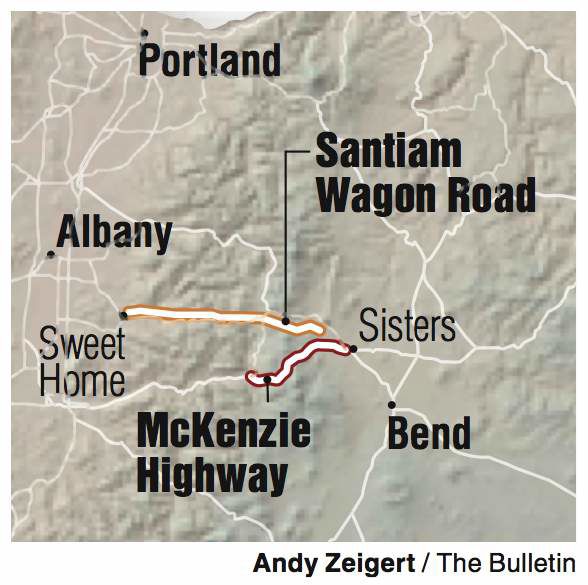Area mountain passes nominated for historic register
Published 5:00 am Thursday, October 15, 2009

- Area mountain passes nominated for historic register
Two routes that revolutionized travel between Central Oregon and the Willamette Valley have been nominated for inclusion in the National Register of Historic Places.
The Santiam Wagon Road and the McKenzie Highway, which is also state Highway 242, were, respectively, the first wagon-accessible and the first car-accessible roads between the Valley and Central Oregon.
Both terminate near Sisters on the east side of the Cascades and cover similar terrain across the mountains.
The Oregon State Advisory Committee on Historic Preservation will be considering both nominations next week. If approved, the committee’s recommendations will be forwarded to the National Park Service, which maintains the National Register.
Documentation prepared by the U.S. Forest Service, which controls what remains of the Santiam Wagon Road, and the Oregon Department of Transportation, which controls the McKenzie Highway, outlines the development and construction of both roads.
The beginnings of the Santiam Wagon Road trace to 1859, when guide Andrew Wiley discovered a Native American trail that had until then eluded white residents of the area. A party led by Wiley traveled from Sweet Home to the Deschutes River and back but was unable to secure financing to build a road. In late 1864, a privately chartered company began construction of a toll road across the pass, completing the work by the spring of 1866 at a cost of $13,000, according to the application prepared by the Forest Service.
The road proved popular with ranchers, who used it to transport sheep and cattle across the pass, and accelerated the development of Central Oregon by allowing the importation of Willamette Valley produce. Railroads began arriving in Central Oregon in 1900, diminishing the Santiam Wagon Road’s importance as a means of transporting goods and raw materials in and out of the region.
A 1905 auto race heralded the beginning of the end for the road. Two drivers made the trip from New York City to Portland, using the Oregon Trail for much of the trip and the Santiam Wagon Road for the final leg. Driver Dwight Huss and mechanic Milford Wigle encountered a brake failure while descending the steep western side of the pass, and tied a tree to the back end of their Oldsmobile to keep from sliding off the road. At the eastern tollgate, the men paid a 3-cent toll — the rate for hogs, because there was no established rate for automobiles — and continued on to Portland, completing the trip in 44 days and winning $1,000.
A campaign to create automobile-suitable roads began in 1913 with the creation of the Oregon State Highway Commission, and the McKenzie Highway was designated as one of five proposed state roads the following year. Construction began in 1919 and was completed in 1924, following routes traveled by the Santiam Wagon Road and other wagon trails that had been carved into the forest over the previous 60 years. Crews from the Civilian Conservation Corps built the Dee Wright Observatory near the top of McKenzie Pass in 1935, and by 1946, the entire length of the highway had been paved. As is the case today, the highway was routinely closed due to winter snows. In 1962, the Clear Lake-Belknap Springs Highway was completed, linking the McKenzie Highway with U.S. Highway 20 and opening a year-round route.
Ian Johnson, a historian with the state Historic Preservation Office, said placement on the register would not significantly alter the management of either route. Although the Santiam Wagon Road is all but unused, the McKenzie Highway is a popular tourist route during the summer and has been resurfaced and otherwise altered multiple times. Johnson said historic designation would not prevent ODOT from conducting such maintenance, noting that several bridges on the Oregon Coast are currently used by the public and on the national registry.
“All ODOT is really obligating itself to do is check in with our office before they do any changes or major modifications to that road,” Johnson said.
Peter Murphy, spokesman for ODOT, said the McKenzie Highway is a fitting candidate for inclusion in the national register.
“It absolutely has the same kind of historical value here as other roads around the country,” Murphy said. “It’s not Paul Revere’s ride, but it’s still our history.”






